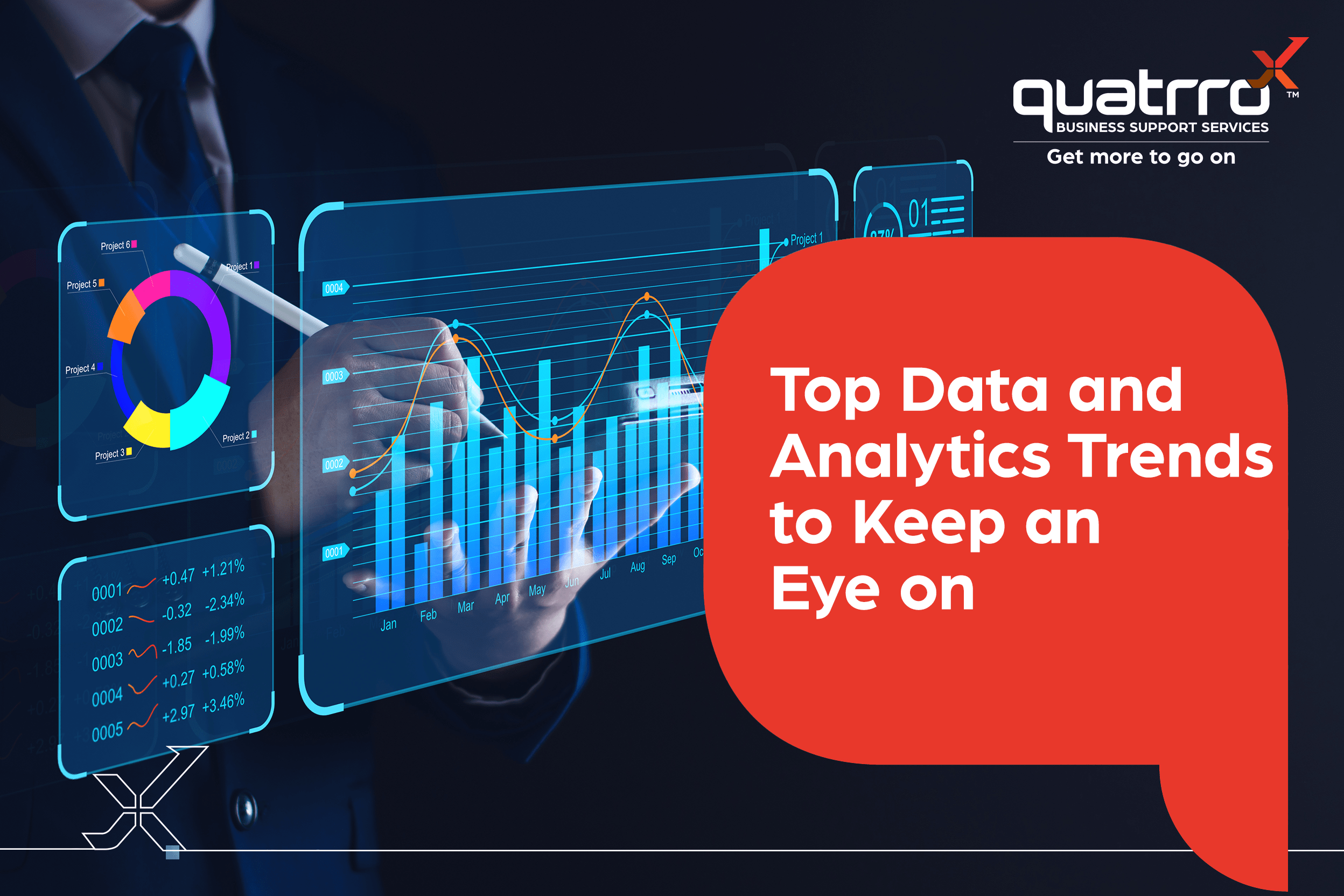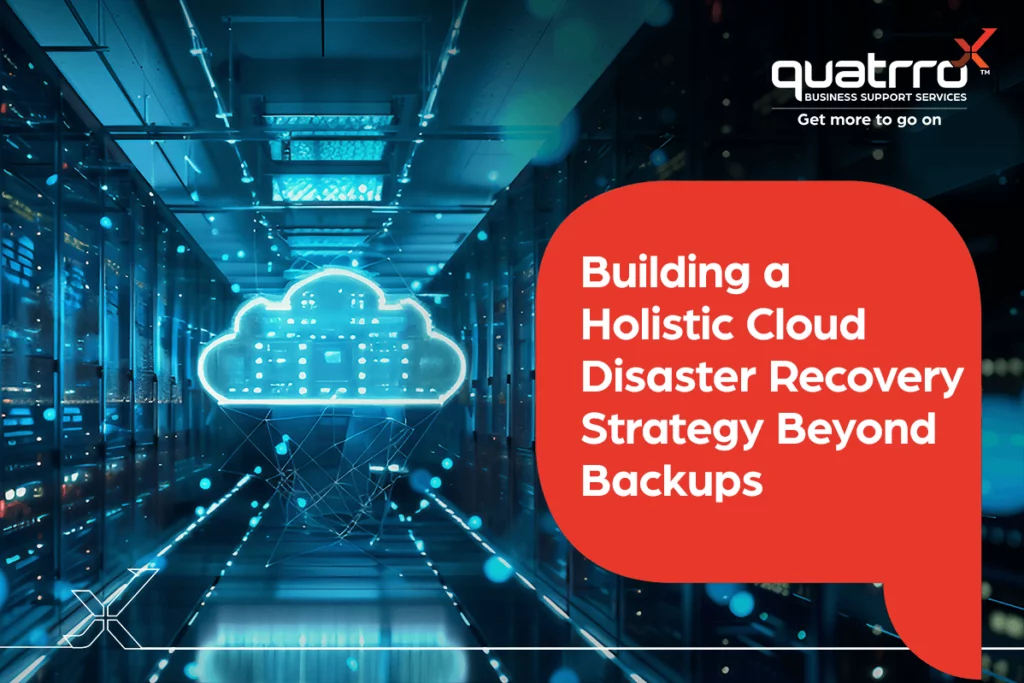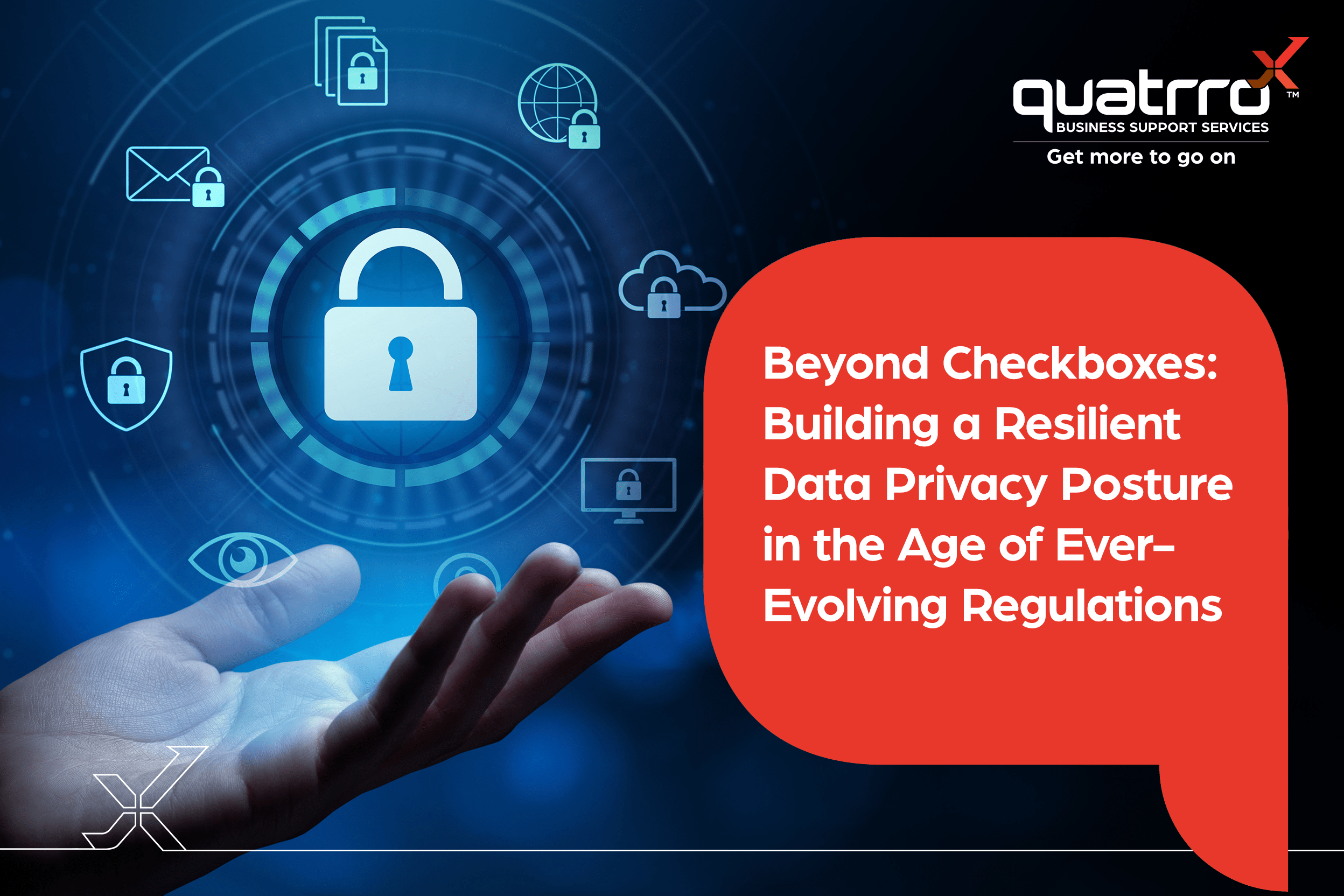Blog Details
Top Data and Analytics Trends to Keep an Eye on in 2023
July 26, 2023

“Without big data, you are blind and deaf and in the middle of a freeway.” — Geoffrey Moore.
Data is one of the most valuable assets for businesses today and has emerged as a revolutionary force. Huge development is being seen in the use of data and data analytics trends this year alone. From support for fact-based business decisions to the expansion of data-focused product and service offerings, all of them seemingly focused on helping organizations cope with the numerous changes and uncertainties coming at them today.
Let us examine a few statistics that illustrate how data has evolved to become the key factor it has become in modern businesses:
- Per Forbes, data driven companies are 23 times more likely to acquire customers than their peers.
- Harvard Business Review states that 74% of business leaders expect long-term gains in productivity by making data insights available to frontline employees (those providing the first point of contact to customers).
- According to Forbes, more than half (55%) of North American businesses have adopted big data analytics.
- Per reports by Finances Online, 63% of companies say that improved efficiency is the top benefit of data analytics, while 57% say more effective decision-making.
No matter how we have arrived at this point, change and disruption have become the norm. Data analytics is expanding and opening doors to new opportunities. The capacity to use data for informed business decisions in the right place and at the right time is vital, yet there are still many organizations lack this needed insight. CIOs and IT directors should lead the way in identifying ways to exploit their own company data and mine its value for the organization by leveraging quickly changing technologies and capabilities.
With these factors in mind, let us look at a few of these Data Analytics elements that are becoming an inherent part of the industry:
 |
Artificial Intelligence and Machine LearningBecause 90% of data is unstructured, most organizations struggle to analyze this unstructured data in a smarter and faster manner. However, AI and ML-based models have the potential to alter data analytics by providing intelligent automation and actionable insights on the data, as well as detecting abnormalities and alerting the right teams in real-time—all without the need for human intervention. |
 |
Data DemocratizationThe volume of data around us is growing as a result of
digitization, smartphones, and the Internet of Things (IoT), but organizations today
face a challenge because they are unable to harness all this data and maximize its
value, which can be essential for them on their road to success. Data
democratization, the ongoing process of enabling everybody in an organization,
irrespective of their technical know-how, to feel comfortable and confident in working
with and talking about data within their area of the business, has a role in this
situation. The advantages that come with data democratization include giving
employees across the company a 360-degree view of the customer, streamlining
remote work, fostering innovation, empowering, and improving customer experience.
|
 |
Data-as-a-ServiceEvery day, around 3.5 quintillion bytes of data are created! Clearly, for we live in an era where data serves as the gasoline that allows organizations to run. Many organizations are turning to the cloud to modernize their infrastructure and workloads, and Data as a Service, or DaaS, is becoming a popular solution for data integration, administration, storage, and analytics. Companies that embrace DaaS can improve the agility of their data workloads, minimize time-to- insight, and improve the dependability and integrity of their data. |
 |
Data VisualizationWith the enormous volume of data being generated every day, it is seemingly impossible for businesses to independently make data more accessible and intelligible. That is where data visualization comes in; it not only assists organizations in analyzing and sharing information, but it also supports them in making agile decisions and improving business operations and financial outcomes. Additionally, it can aid in communicating, contextualizing, and making it more easily digestible and actionable by graphically portraying the information. When used effectively, it shows essential changes, patterns, and trends utilizing a visual format most people can easily understand such as charts, graphs, maps, and plots thereby helping to make the data easier to interpret. |
 |
Edge ComputingWith the advent of 5G, computing has created a plethora of new opportunities across a wide range of endeavors. In short, Edge Computing focuses on moving computer storage and processing to the edge of the network where is it closest to users and devices and most critically, as close as possible to data sources. Bringing computing and data storage closer to the source of the data makes data easier to handle. It also makes the data more accurate, at lower costs, and makes it easier to gain insights and act faster while allowing for more continuous operations. |
Data analytics will likely continue to be a differentiator as businesses around the world compete to remain ahead of the competition. Given the trends we have seen so far, it appears that a key factor in determining the long-term success of an organization will be its capacity to leverage data to produce and action business intelligence.
Some organizations are just starting to understand the value of Edge Computing and how it can transform their data into instantaneous insights. Others, though, are choosing a different path and putting ML platforms in place that can generate insights without human participation. And thanks to the democratization and visualization of data, more business choices are now being made using data. Whatever data analytics path your business decides to go down, and you will need to choose one eventually, there appear to be plenty of possibilities so you can find the one that is right for your organization and long-term goals.
If you, like many organizations, feel overwhelmed about identifying the right data analytics path to head down, Quatrro Business Support Services, and its subsidiary USWired, are always happy to help clients find ways to transform their back office. This often means starting with a discussion to help us understand where you are today (including your biggest pain points), and what your short-term and long-term goals are so we can outline and help you implement a solution that will move you in the direction of achieving those goals. Reach out today to start the conversation and find out how we can give you More to Go On!







